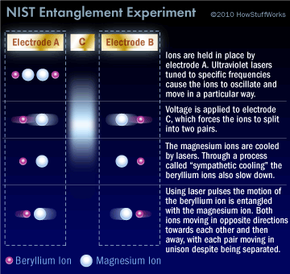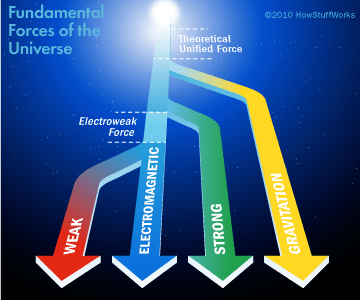Superman has his Bizarro planet, Alice tiptoes through the looking glass and countless other fictional characters inevitably encounter a world where normal rules and laws fail to explain what's happening. In other words, things get weird.
Cross over into the world of quantum physics, and you'll encounter more of the same. At the atomic and subatomic levels, scientists encounter what we call the quantum realm. Here, where events play out at distances of nanometers, many laws of classical physics appear to break down. Leading quantum physicist David Bohm even theorized that this strange microworld is the underlying reality of our universe, which he dubbed the "Implicate Order."
Advertisement
In the quantum realm, for instance, scientists can predict very little with 100 percent accuracy. According to Heisenberg's uncertainty principle, you can't even measure the position of an object without disturbing its momentum in an unpredictable way. Classical physics fails to account for this phenomenon, and it serves as a prime example of quantum weirdness in action.
The so-called EPR paradox, named for Albert Einstein, Boris Podolsky and Nathan Rosen, supplies an even stranger example of quantum weirdness, in which two subatomic particles thousands of light-years apart can instantaneously respond to each other's motions. Scientists have observed this phenomenon, called entanglement, at the particle level, and in 2009, managed to produce the effect with linked superconductors [source: Sanders]. We're potentially looking at faster-than-light signaling that turns relativity on its head.
So quantum physicists continue to wrestle with the weirdness of their discipline. Bohm, who died in 1992, even proposed that quantum weirdness is the result of underlying subquantum forces and particles. So our understanding of this minute level of reality may be lacking, in part, because we understand so little about even more minuscule layers.
Think of classical physics as the Earth's crust and quantum physics as the underlying mantle. There are things about the Earth's mantle, however, that only make sense if you take into account the Earth's inner core.
Physicists continue to ponder the universe's many mysteries, but for now the quantum realm remains one weird, weird place.
Advertisement


